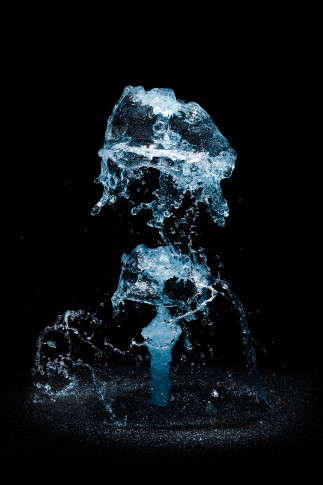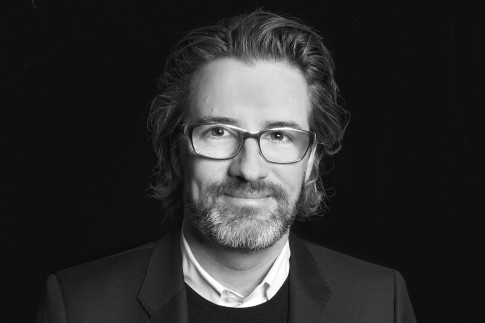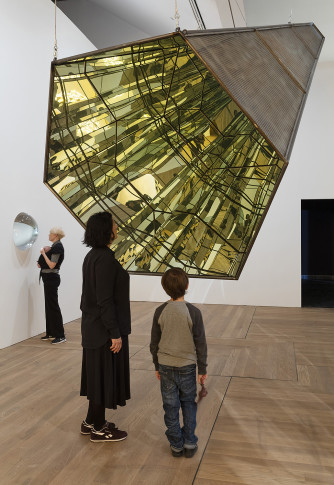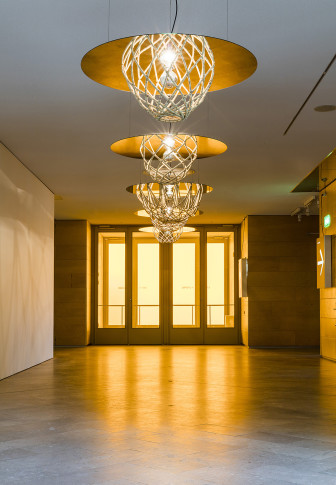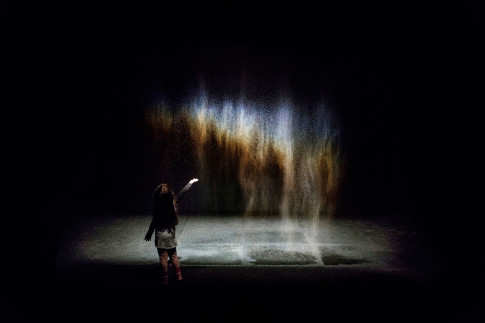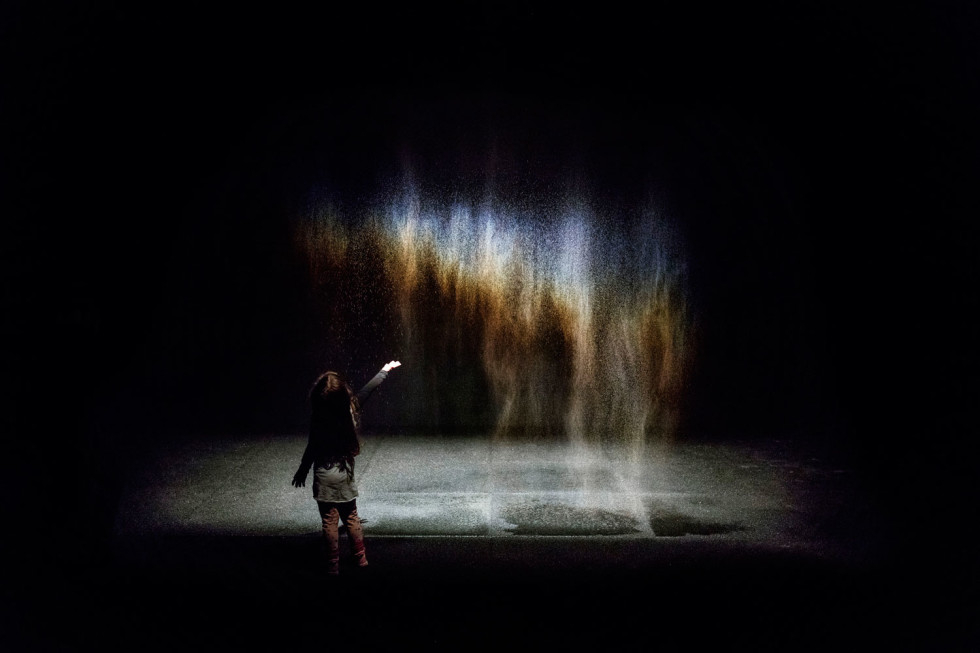
Olafur Eliasson, Beauty, 1993 Installation view Moderna Museet/Arkdes, Stockholm 2015 © 1993 Olafur Eliasson. Photo: Anders Sune Berg
The central themes
Cross-disciplinary
Philosophy, psychology, mathematics and natural sciences are distinctly in evidence in Eliasson’s body of work, and he seeks discussion partners in a wide field of scientific disciplines. Essays about Eliasson frequently mention that he was seminally influenced by the philosophical theories of phenomenology, represented by scholars such as Maurice Merleau-Ponty, at an early stage in his career. More recently, the philosopher and sociologist Bruno Latour has been important, along with the writer and philosopher Timothy Morton, who has written one of the essays in the catalogue. Other noteworthy influences are the American West Coast light and space artists, for instance Robert Irwin.
Movement
Many of the installations in this exhibition incorporate movement. Sometimes, the movement is an inherent part of the work, as in Ventilator (1997), where a fan circulates in irregular ellipses above our heads, propelled by the air stream emanating from its own motor. In others, the components are static, while the viewer’s movements are essential to the work, as in Beauty (1993). In yet other cases, we move through the work, as in Seu corpo da obra (Your body of work, 2011).
Nature as a construction
In Moss wall (1994), shown in the first room, one of the walls is obscured by a dense carpet in various greens. Nature’s own ground covering has been moved indoors, with hand-tufted reindeer lichen used to form a vertical organic tapestry. This work has historic references to Nordic landscape painting, but instead of depicting nature, the plant life has literally been introduced in the institutional setting. Nature has become part of culture. The installation The sandstorm ark (1999), made of everyday materials, is a room where our physical presence influences the work of art. The floor is covered by sand, and a hose suspended from the ceiling writhes in rapid motion, blowing the sand in different directions. Visitors trigger an interactive sandstorm – giving us yet another image of nature as a construct.
Colour and light
Eliasson invests light and colour with great significance by making them more physically palpable. Optical phenomena are explored and examined. In Room for one colour (1997), the room is filled merely by a yellow mono-frequency light that makes our eyes distinguish only yellow and black. Reality is altered. When the viewer leaves the room, an after-image in the complementary colour blue appears on the retina. An after-image is an optical phenomenon that arises when the eye tries to compensate for monotonous stimulation. It is ephemeral and disappears gradually. The after-images experienced by two individuals who visit the room at the same time can vary in intensity depending on how long they remained in the room. Thus, the work exists not only in the room but is incorporated with the viewer.
The activity that for centuries has been fundamentally linked to the artist – that of mixing and applying paint – is also entrusted to the viewers in the work Seu corpo da obra (Your body of work, 2011). In this installation, monochrome colour filters form semi-transparent walls that hover in space like flat, vertical bubbles. Volumes that are at once both transparent and distinctly defined appear and together form a labyrinthine architecture of coloured space. As the viewer passes through the room, the three colours of the wall filters, magenta, yellow and cyan, overlap in various combinations, giving rise to new colours. Colour is a phenomenon that is perceived by the eye when light reflected by the surface of an object reaches our retina. According to Eliasson, this means that when we analyse colour, what colour is, and how it is created, we are co-producers of colour – and are reminded once more of our participation in shaping our image of reality.

